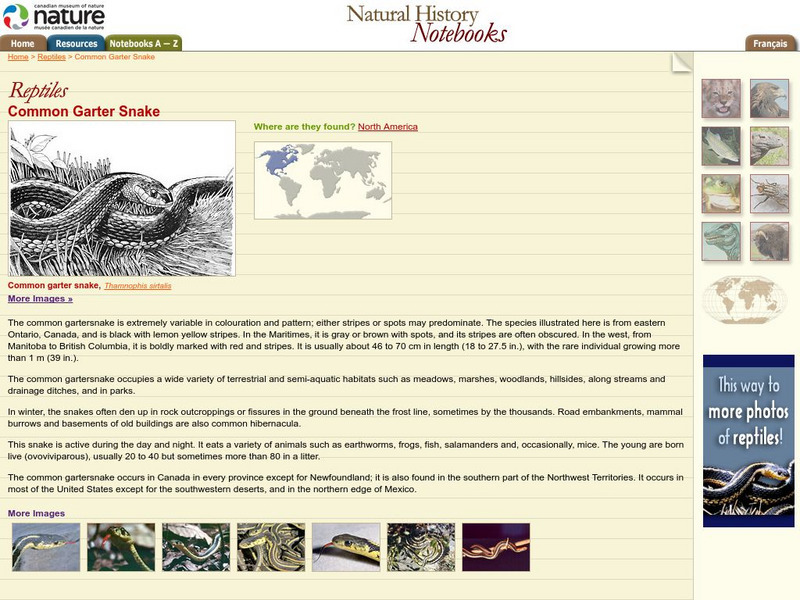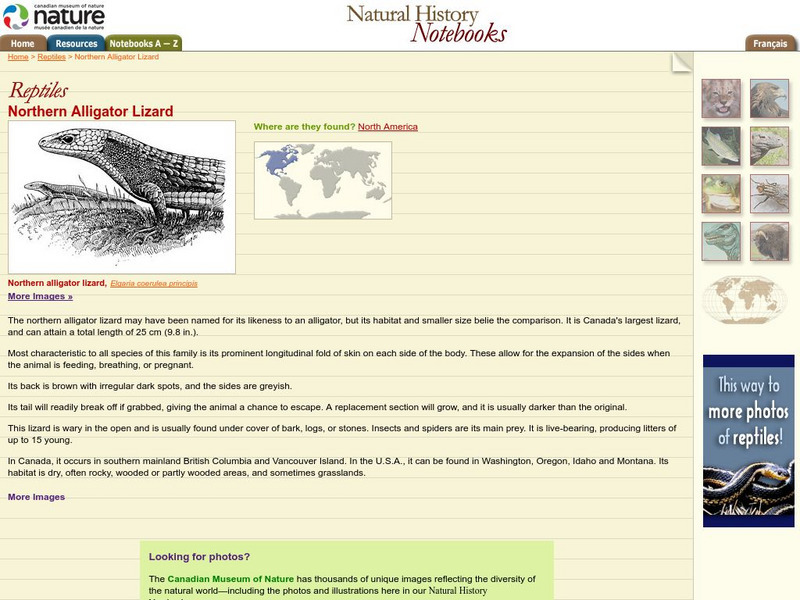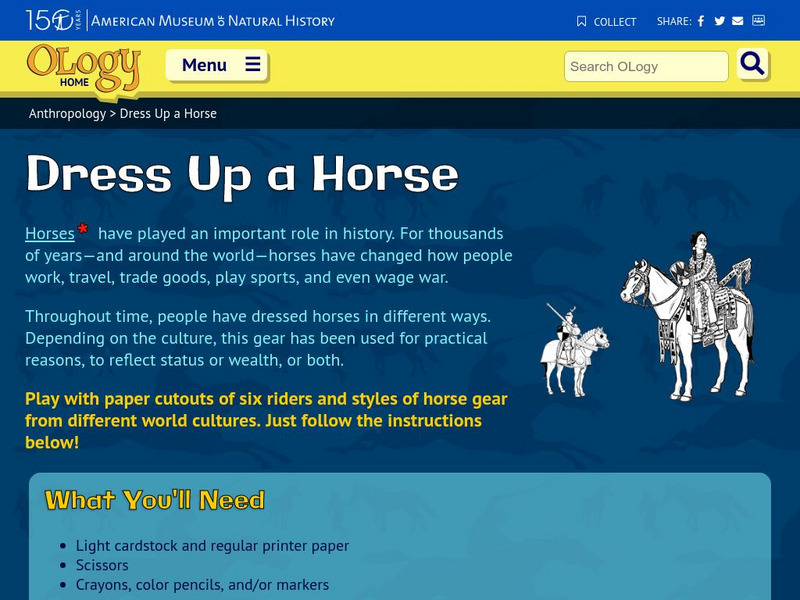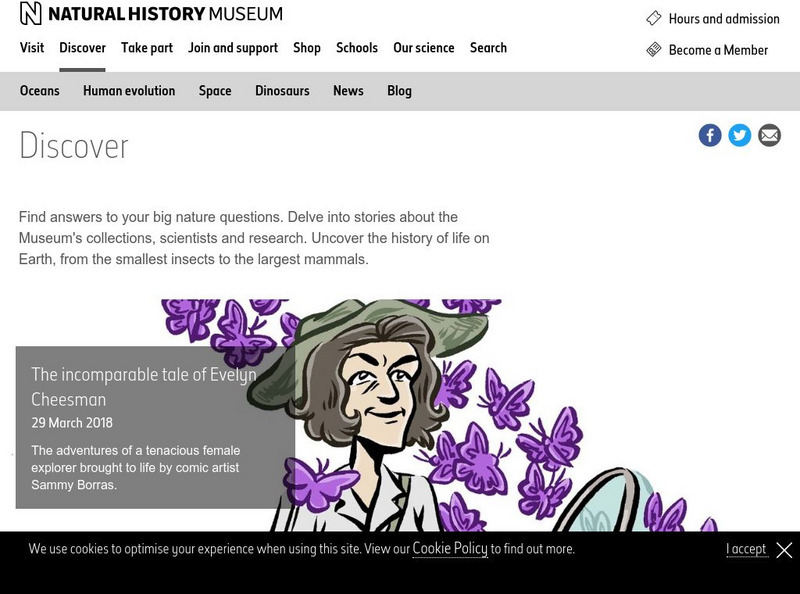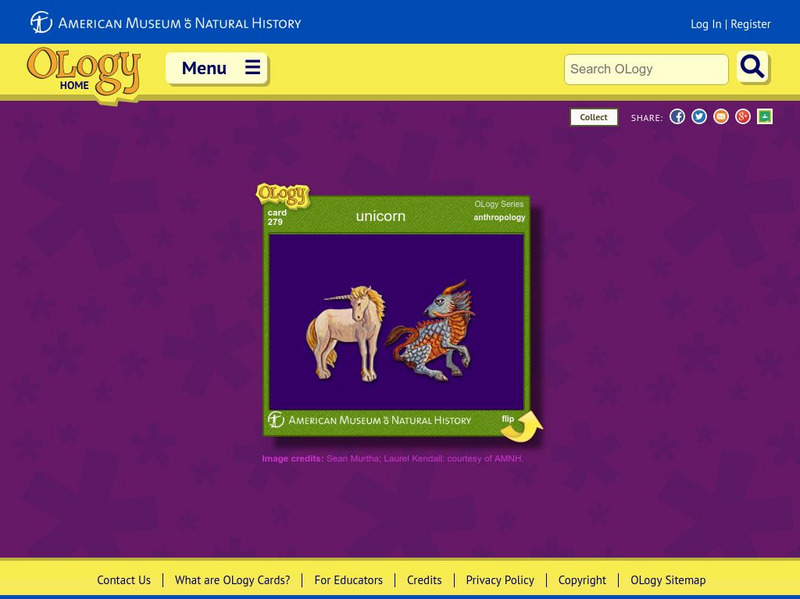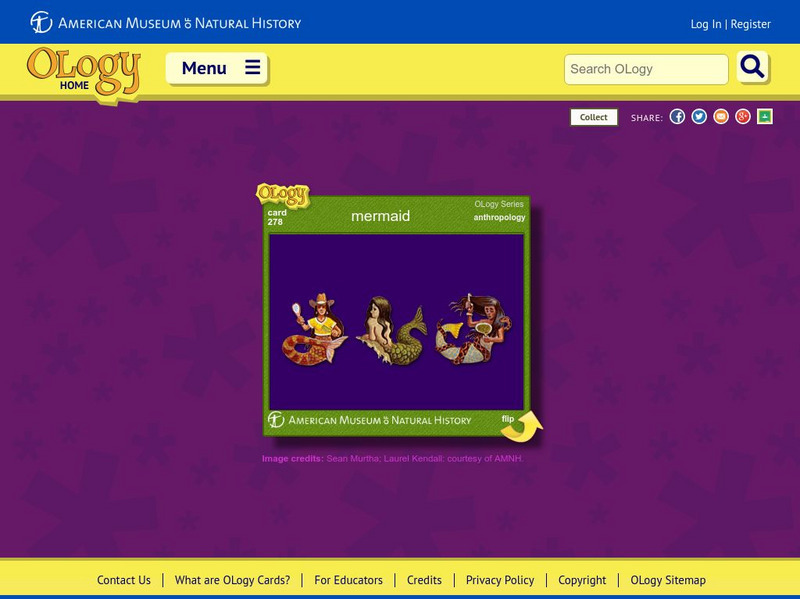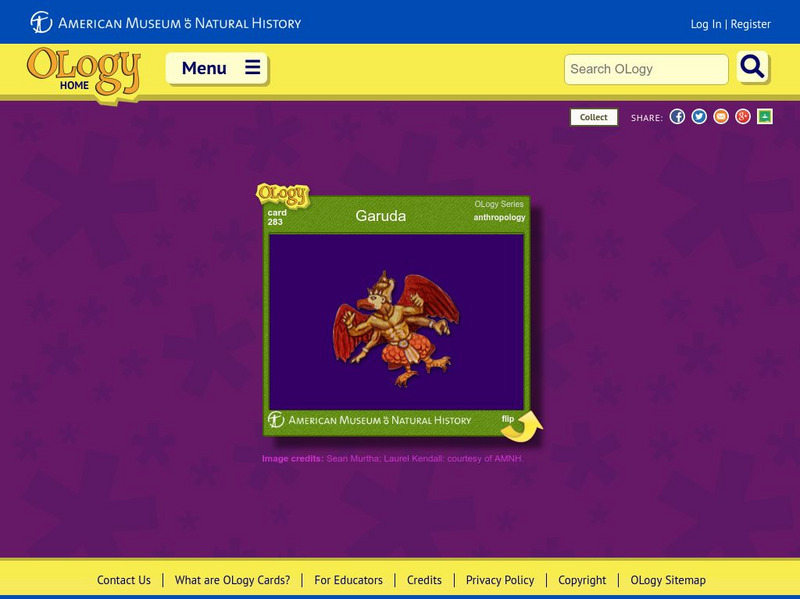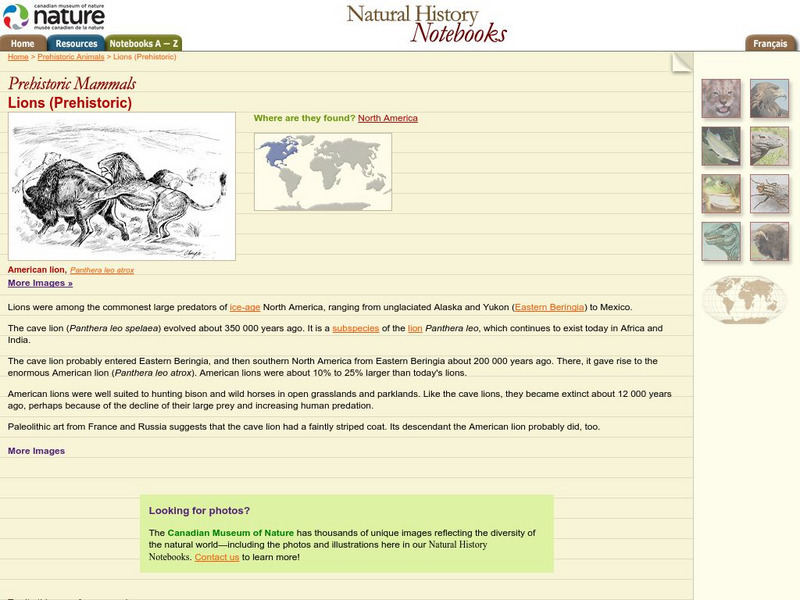Canadian Museum of Nature
Canadian Museum of Nature: Garter Snake
Did you know that the common garter snake can be found in every province in Canada, except Newfoundland? This is just one of the interesting facts presented along with eight close up photographs.
Canadian Museum of Nature
Canadian Museum of Nature: Boa Constrictor
The boa constrictor is not venomous, but kills its pray by constriction. Described at the boa constrictor's characteristics, young, habitat and pray. Included is one close up image.
Canadian Museum of Nature
Canadian Museum of Nature: Northern Alligator Lizard
The northern alligator lizard is Canada's largest lizard. Described are its characteristics, and habitat.
Canadian Museum of Nature
Canadian Museum of Nature: Indian Gavial
The Indian gavial is one of the rarest crocodile species in Asia. Described at its characteristics, young. Included is one photograph.
Canadian Museum of Nature
Canadian Museum of Nature: Galapagos Land Inguana
Today, very few of the Galapagos land iguanas exist. Described are their characteristics, food, and reproduction. Eight photographs show this iguana close up in its habitat.
Canadian Museum of Nature
Canadian Museum of Nature: Crocodiles
Do you know the difference between a crocodile and an alligator? Find out how they differ, the number of species, what they eat, their characteristics and location. Six pictures show this reptile in its habitat.
Canadian Museum of Nature
Canadian Museum of Nature: American Alligator
Did you know that there are 21 crocodilian species? This is just one of the interesting facts that describe the alligator's features, habitat, and young. Ten close up photographs provide for an exciting look at this amazing reptile.
Canadian Museum of Nature
Canadian Museum of Nature: Dovekie
The Dovekie, also known as a little auk, is a small black and white sea bird that inhabits the Arctic and Northern Atlantic oceans. Briefly described are the locations it may be found in and its characteristics. Included are two close up...
Canadian Museum of Nature
Canadian Museum of Nature: Yellow Bellied Sapsucker
Briefly described are the characteristics and feeding habits of the Yellow-bellied Sapsucker. This is of one of the few species of migratory woodpeckers. Two pictures provide a close up view.
American Museum of Natural History
American Museum of Natural History: O Logy: Stuff to Do: Dress Up a Horse
For this activity, students dress a horse and rider in gear from six cultures. They then answer questions about their features and about similarities and differences between styles from different cultures. The horse, rider, and gear...
American Museum of Natural History
American Museum of Natural History: Piecing Together the Puzzle of History
A brief introduction for students to the field of archaeology.
Mariners' Museum and Park
Mariners' Museum: Education: Christopher Columbus: First Voyage
This resource provides information about Christopher Columbus and his voyages.
Smithsonian Institution
Smithsonian American Art Museum: Contemporary Folk Art
Colorful treasures from the Smithsonian are included in this exhibit along with explanations below each picture. Click on 'Index' to see the complete list of works.
Natural History Museum
Natural History Museum: Shark Teeth Fossils
The information provided at this site is part of a larger online exhibit centered on fossils and fossil research. The shark tooth is listed as one type of fossil and here it is pictured and described.
American Museum of Natural History
American Museum of Natural History: Peru O Logy Card
Turn over this interactive OLogy flash card to learn about Peru, its ancient people and their descendants. Find fast facts, questions and answers, and similar bite-size pieces of information about the country.
American Museum of Natural History
American Museum of Natural History: Petra O Logy Card
Flip over this interactive OLogy flash card to start learning about Petra, an ancient trading center located in modern-day Jordan.
American Museum of Natural History
American Museum of Natural History: O Logy: Unicorn
The unicorn appears in both European and Asian mythologies. Read about the differences in appearance and behavior. Take the quiz on the back to learn more about unicorns. Flashcard format.
American Museum of Natural History
American Museum of Natural History: O Logy: Mermaid
The myth of the mermaid has been found in stories of many cultures. Take the quiz and learn more about this mythical creature. Flashcard format.
American Museum of Natural History
American Museum of Natural History: O Logy: Garuda
Garuda, a mythic bird-like creature, is an important figure in Hindu mythology, but you can find out what other cultures have adopted this mythological bird. Flashcard format.
American Museum of Natural History
American Museum of Natural History: Nabataeans
Use this interactive OLogy card to learn about the Nabataeans, an ancient Middle Eastern civilization.
Canadian Museum of Nature
Canadian Museum of Nature: Dinosaurs: Archaeopteryx Lithographica
Is it a feathered dinosaur, or the ancestor of birds? Find out about the Archaeopteryx lithographica whose fossil remains show feathers similar to that of a bird, and whose skeleton resembles that of a dinosaur.
Canadian Museum of Nature
Canadian Museum of Nature: Peary Caribou
Get to know the Peary Caribou.. colored photos, description, life cycle, map of habitat, food. Only the basic details of this animal are given, making it a perfect site for younger researchers.
Canadian Museum of Nature
Canadian Museum of Nature: Killer Whale
Get to know the Killer Whale.. colored photos, description, life cycle, map of habitat, food. Only the basic details are given, making this site perfect for younger researchers.
Canadian Museum of Nature
Canadian Museum of Nature: Lions (Prehistoric)
Lions were among the largest predators during the ice age. Get other interesting facts about this ancestor of the American Lion.


